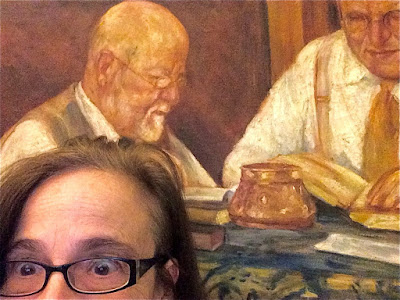 |
| Best people, best Bhutanese food, best time! |
How I missed this wonderful couple and how joyous our reunion. True to my inherited trait, weeping when happiest, I shed many tears embracing my beloved Indira and Narayan. And we laughed, shared, and probed local, personal, and global matters; drank divine nectar and ate ambrosia they had prepared; and held closely Pritam, of blessed memory.
Ashish later joined us and shared with the Bhutanese-American couple about mutual interests (healthcare), neighboring birthplaces (Bhutan, India), common spiritual traditions (Hinduism), and exchanged thoughts in at least half a dozen languages! Then Ashish and I took off to spend the rest of the day at the Martin Luther King Jr Historic Site.
 |
| Indira, Narayan, me, Ashish |
Related posts and articles
- Bhutanese Atlantans repurpose "the vine that ate the South" (includes video)
- The Support Group: Our Story
- Atlanta’s Bhutanese refugees and their new neighbors
- Bhutan refugee finds Shangri-La in Atlanta
- Teen rises up as go-to guide for refugees from Bhutan
- Atlanta’s Bhutanese refugees and their new neighbors




























